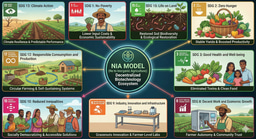World Diabetes Day 2023 | Housing Insecurity and Diabetes Care: Leaping the Diabetes Intervention Chasm
Published in Public Health


First, I’d like to take this opportunity to recognize the tireless work my much more accomplished co-authors engage in every day. Health disparities researchers face an increasingly maddening paradox – the simplest and probably most effective solutions to preventing unnecessary death are going to be the most difficult to implement. Additionally, I’m grateful for the invitation to write a corresponding blog post to our paper because the recommendations within I felt warrant some discussion about the lack of affordable housing in the US.
Researching this paper topic was of interest to the co-authors and myself because housing is a basic need and providing evidence that people’s health is negatively impacted when their housing is not stable is a prerequisite for advocating for change at a policy level in modern society. Our study findings added some new insights to the evidence base; we found those who reported housing insecurity had a lower likelihood of several self-reported diabetes processes of care and self-care behaviors, and this relationship was moderated by both employment and race/ethnicity in some interesting ways.
We highlighted prior research indicating individuals with diabetes who are housing insecure need to invest more resources and personal energy into getting around barriers to managing their diabetes, and clinicians find maintaining regular standards of care challenging for these patients (Henry et al, 2020). It’s not hard to imagine how the stress of potentially losing your home can be all consuming, leaving one with very little capacity to deal with a chronic disease like diabetes that requires so much daily effort from the individual affected to keep it in check.
With or without diabetes, human health is inextricable from basic needs for healthy food, clean water, and safe shelter – who would disagree? However, even in high-income economies like the U.S., basic needs are heavily regulated, unevenly allocated, and incessantly debated. In modern societies, accessing basic needs is not something an individual can do without engaging in the infrastructure and economies we’ve built around basic needs. An unhoused person in the U.S. cannot just build a house for themself to live in, they must seek out someone appointed with housing resources who can find the appropriate housing for their situation, and the appointed person has a dual obligation to ensure the unhoused person meets the criteria and follows the rules for living in that house/apartment/room/sleeping pod. Our basic needs are subject to conditions, and the worse off you are, likely the more conditions.
While many diabetes interventions at the individual, organizational, or provider level have the evidence behind them to be successful, they are not equipped to address gaps in basic needs for vulnerable people; providers cannot connect patients with material needs when they are unobtainable. This may be a reason why, as noted in our paper, only 2% of nationally representative sample of adults with diabetes who were unstably housed reported receiving help with housing in a clinical setting (Berkowitz et al, 2018). I recognize this poses a challenge to our paper’s concluding recommendation:
“To minimize the impact of housing insecurity on diabetes outcomes, housing insecurity questions should be included in standardized assessments used within the clinical setting to further tailor diabetes care interventions to patients and connect those facing housing insecurity to a social service provider with housing resources.”
The recommendation is valid. However, it is dependent on an individual who has access to a resource that must be readily available to the patient. This is exactly the point where individual and organizational level interventions fall short, where there exists a chasm between the basic needs of the patient and the capacity of their environment to meet those needs. In other words, it’s difficult to put these types of recommendations into practice in places that need community level interventions that directly target community level determinants of health.
Consider the current housing crisis in the City of Milwaukee where our team conducts research on diabetes interventions. For context, Milwaukee is one of the most segregated cities in the U.S. and most Black residents are concentrated in the central city where, not surprising, there is a lack of affordable and safe housing. Milwaukee County has a diabetes prevalence rate of 11%, however, 29% of Black residents participating in a national survey in the City of Milwaukee reported having diabetes (Ryff et al, 2018).
Wisconsin state statutes require municipalities to produce yearly housing affordability reports. The 2022 report from the City of Milwaukee states that there are 38,900 households that earn less than $20,000 per year and pay more than half of their income on housing, and they expect this number of severely cost burdened households to grow. In total, 95,900 Milwaukee households report cost burdens (42% of all households). Households of lower income and of persons of color tend to be disproportionately affected by housing cost burden and are subject to housing insecurity associated with lower home ownership rates, greater risk of foreclosure, and higher eviction rates. Most severely cost burdened households are renting, indicating there are very few rental units available that are appropriately priced. Despite the lack of affordable units, the city reports having a more than adequate supply of housing units. To remedy the issue, housing policy experts recommend providing housing assistance in the form of public housing, subsidized housing, or a housing voucher. The report acknowledges that the number of resources required to meet the needs of severely cost burdened households alone is far beyond the scope of local government to do at a meaningful scale in Milwaukee.
Now, I bet it’s not hard to figure out what a community level intervention for affordable housing in Milwaukee might look like with this knowledge. Simple solutions, right? Well, not quite – but I hope the health disparities researchers are taking note. People are in dire need of community level interventions to adequately address health disparities and the time to do them is now.
Follow the Topic
-
BMC Health Services Research

An open access, peer-reviewed journal that considers articles on all aspects of health services research, focusing on digital health, governance, policy, system quality and safety, delivery and access, financing and economics, implementing reform, and the workforce.
Related Collections
With Collections, you can get published faster and increase your visibility.
Disability-inclusive health systems
BMC Health Services Research is calling for submissions to our Collection on Disability-inclusive health systems.
Disability-inclusive health systems are essential for ensuring equitable access to health services for all individuals, including those with disabilities. This Collection aims to explore the current state of health systems and their ability to provide inclusive care that meets the diverse needs of people with disabilities. By examining the barriers faced and the strategies employed to create more accessible health services, this Collection will contribute to a better understanding of how to integrate disability considerations into health system planning and implementation.
The significance of this research lies in its potential to inform the development of health policies that are inclusive and equitable. Advances in this field have highlighted the importance of stakeholder engagement, training for health professionals, and the implementation of assistive technologies in promoting disability-inclusive health services. Furthermore, understanding the lived experiences of individuals with disabilities can provide valuable insights into how to design health systems that are responsive and respectful of their needs.
Topics for submission:
Strategies for disability-inclusive health service delivery
Barriers and gaps to accessing health services for individuals with disabilities
Impact of training on health professionals in disability inclusivity
Use of assistive technologies in health systems
Rehabilitation service delivery and disability inclusion
Exploration of interventions to promote disability inclusive health service delivery
This Collection supports and amplifies research related to SDG 3 (Good Health and Well Being) and SDG 4 (Quality Education).
All manuscripts submitted to this journal, including those submitted to collections and special issues, are assessed in line with our editorial policies and the journal’s peer review process. Reviewers and editors are required to declare competing interests and can be excluded from the peer review process if a competing interest exists.
Publishing Model: Open Access
Deadline: Apr 30, 2026
Age-friendly health systems
BMC Health Services Research is calling for submissions to our Collection, Age-friendly health systems.
As the global population ages, the need for age-friendly health systems becomes increasingly urgent. Age-friendly health systems are designed to meet the unique needs of older adults, ensuring that they receive appropriate, effective, and compassionate care. This Collection seeks to explore the various dimensions of age-friendly health systems, including the integration of geriatric principles into healthcare delivery, the role of interdisciplinary teams, and the importance of tailoring services to accommodate the diverse health needs of older populations.
Addressing the challenges faced by older adults in healthcare settings is critical for improving health outcomes and enhancing the quality of life for this demographic. Recent advancements in geriatric care models, technology integration, and patient-centered approaches have shown promising results in enhancing the experience and satisfaction of older patients. By focusing on the unique health goals and preferences of older adults, we can create systems that prioritize their well-being and foster healthier aging.
Continued research in this area can lead to strategies that further refine and develop age-friendly health systems. As we gather evidence on effective practices, we may uncover new frameworks for collaboration among healthcare providers, caregivers, and patients. This knowledge could pave the way for policies that promote equitable access to care and facilitate the integration of supportive services tailored specifically for older adults.
We invite submissions on a range of topics, including but not limited to:
Comparing care received by older adults and younger adults
Improving care for older adults
Differences in health goals of older vs. younger adults
The impact of social determinants of health on older adults
Strategies for enhancing caregiver support and training
Evaluating the effectiveness of age-friendly interventions
Exploring the role of community resources in supporting older adults
Addressing mental health needs within age-friendly health systems
This Collection supports and amplifies research related to SDG 3 (Good Health and Well-being) and SDG 10 (Reduced Inequalities).
All manuscripts submitted to this journal, including those submitted to collections and special issues, are assessed in line with our editorial policies and the journal’s peer review process. Reviewers and editors are required to declare competing interests and can be excluded from the peer review process if a competing interest exists.
Publishing Model: Open Access
Deadline: Mar 19, 2026






Please sign in or register for FREE
If you are a registered user on Research Communities by Springer Nature, please sign in